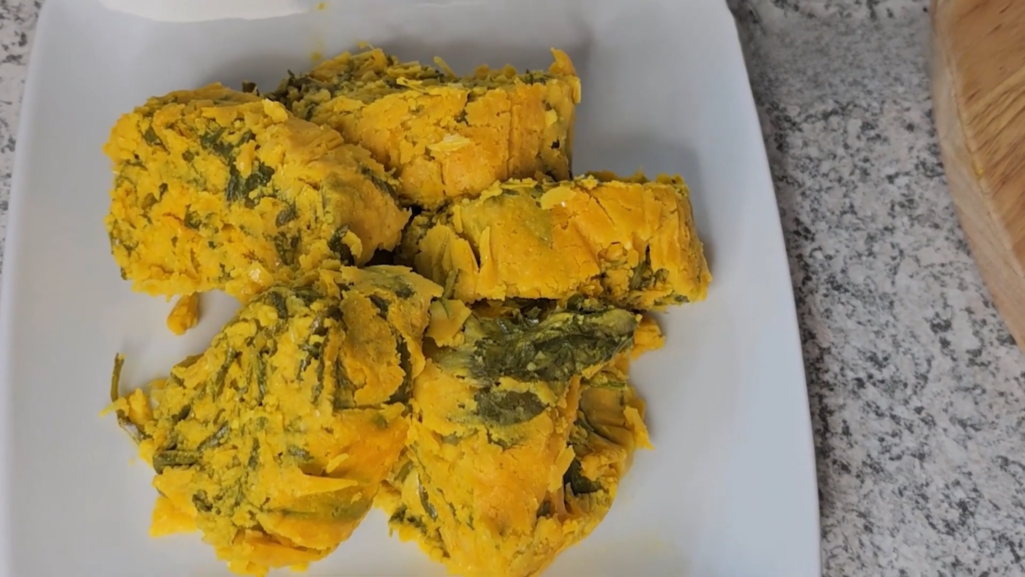Ultimate Guide to Making Koki Corn: A Cameroonian Delicacy

Discover the culinary treasure of Cameroon with this comprehensive guide to making Koki Corn, a traditional and flavorful vegetarian dish that is both nutritious and deeply rooted in Cameroonian culture. This dish highlights the richness of Cameroonian cuisine through its unique blend of ingredients, cooking techniques, and cultural significance.
What is Koki Corn?
Koki Corn is a beloved vegetarian dish from Cameroon, made by blending fresh corn with a selection of flavorful ingredients and steaming the mixture in banana leaves. This method of preparation not only infuses the dish with a distinct aroma but also preserves the nutrients of its ingredients, making it a healthful choice for any meal..
Ingredients:
- 4 cups of fresh corn
- 1 cup of yellow cornmeal
- 3/4 cup of palm oil
- 1 cup of freshly chopped spinach or cocoyam (taro) leaves
- 3/4 tablespoon of salt
- 1 small seasoning cube (e.g., Maggi)
- 1/2 chopped onion
- 1/2 hot (habanero) pepper
- 4-6 banana leaves for wrapping (aluminum foil can be used as an alternative)
Health Benefits of Making Koki Corn
Koki Corn is not only a feast for the senses but also a boon for the body. Here are some of the health benefits:
- Rich in Fiber: The fresh corn and vegetables used in making Koki Corn provide a good amount of dietary fiber, promoting digestive health.
- Vitamins and Minerals: Ingredients like spinach or cocoyam leaves are packed with vitamins A, C, and K, as well as iron and calcium, supporting overall health.
- Heart-Healthy Fats: Palm oil, used in moderation, contains tocotrienols, a form of Vitamin E that has been linked to heart health benefits.

Origin and Cultural Impact
Origin of Koki Corn
Koki Corn has its roots in the rich soils and vibrant culinary traditions of Cameroon. It is a testament to the ingenuity of Cameroonian cooking, utilizing locally available ingredients to create dishes that are both nutritious and full of flavor.
Cultural Significance
Koki Corn is more than just a dish; it represents the communal spirit and cultural heritage of Cameroon. The preparation and consumption of Koki Corn during gatherings and celebrations highlight its role in fostering community bonds and cultural identity.
ALSO READ: Sukuma Wiki (Kenyan Braised Collard Greens and Ground Beef) By The Domestic Man
Step-by-Step Recipe “Making Koki Corn
Preparing the Ingredients
- Corn: Begin by removing the corn kernels from the cob. Blend the kernels lightly, aiming for a coarse texture to retain some of the corn’s natural texture.
- Mixing: To the blended corn, add the cornmeal, chopped onions, and habanero pepper. The cornmeal helps bind the mixture, while the onions and pepper add depth of flavor.
- Seasoning: Incorporate the palm oil, salt, and crumbled seasoning cube into the corn mixture. Mix well until all ingredients are evenly distributed.
Wrapping and Steaming
- Banana Leaves: If using banana leaves, pass them over a flame to make them pliable, then cut them into rectangles. Alternatively, aluminum foil can be used.
- Filling: Place a portion of the corn mixture onto the center of each leaf, folding them to encase the filling securely.
- Steaming: Arrange the wrapped Koki Corn in a steamer or a pot with a little water at the bottom. Steam for about 30 minutes, ensuring the water does not seep into the wraps.
ALSO READ: Ofe Owerri: A Healthful Twist on Nigeria’s Luxurious Soup
Serving and Enjoyment
Once steamed, the Koki Corn is ready to be served. It can be enjoyed on its own or accompanied by grilled chicken for a more substantial meal. The blend of flavors, textures, and the unique steaming technique makes Koki Corn a delightful dish that pays homage to the culinary traditions of Cameroon.
Koki Corn exemplifies the rich culinary diversity of Cameroon, offering a taste of its cultural heritage. This dish not only satisfies the palate but also nourishes the body, making it a cherished part of Cameroonian cuisine and a must-try for food enthusiasts around the world.







Responses